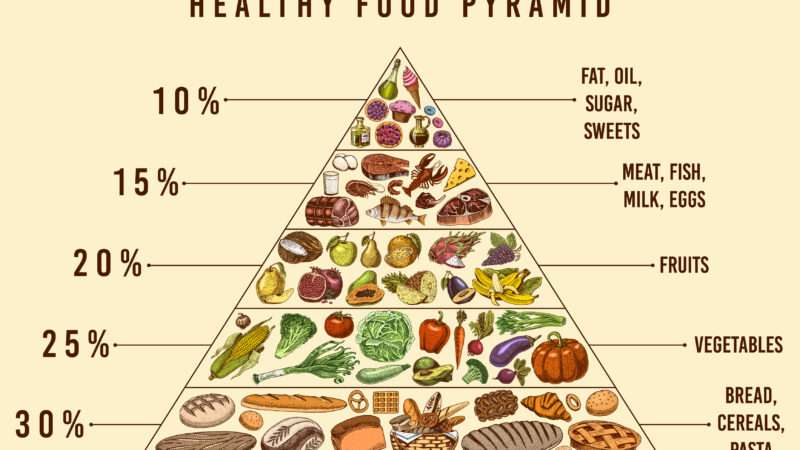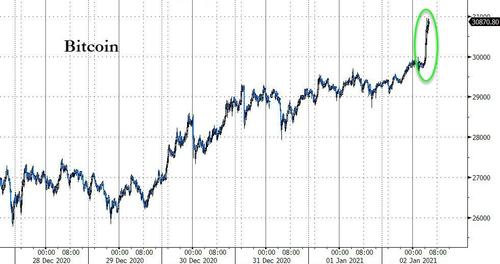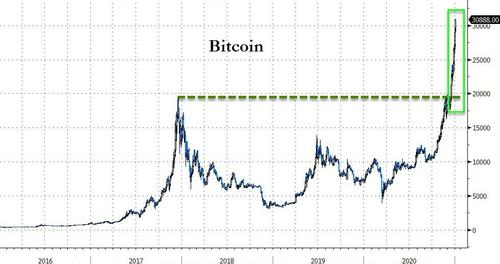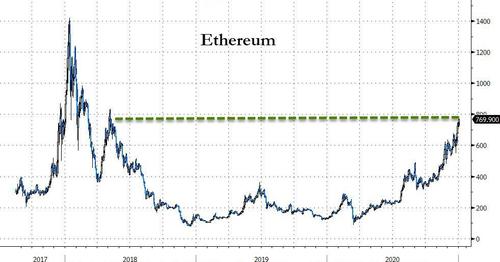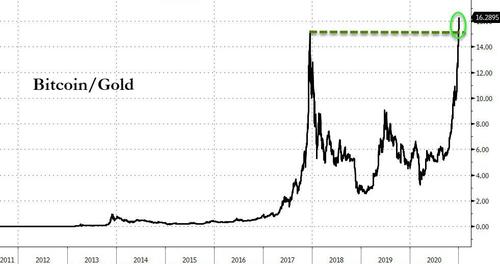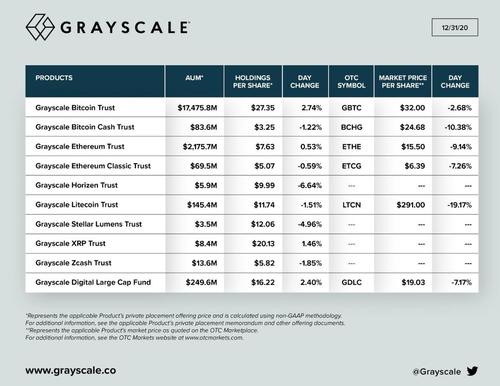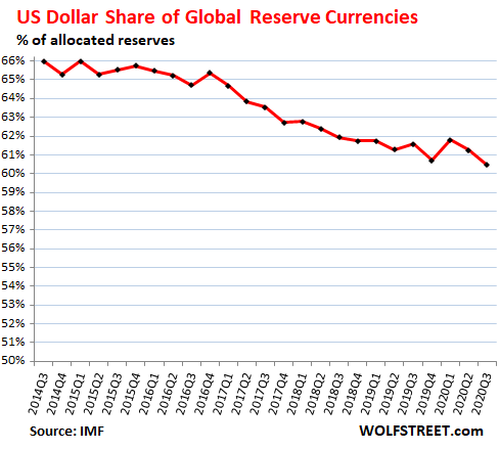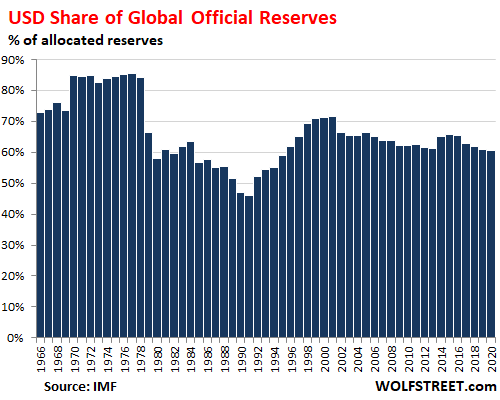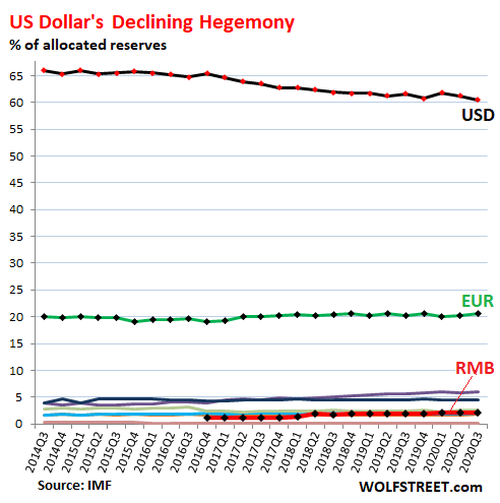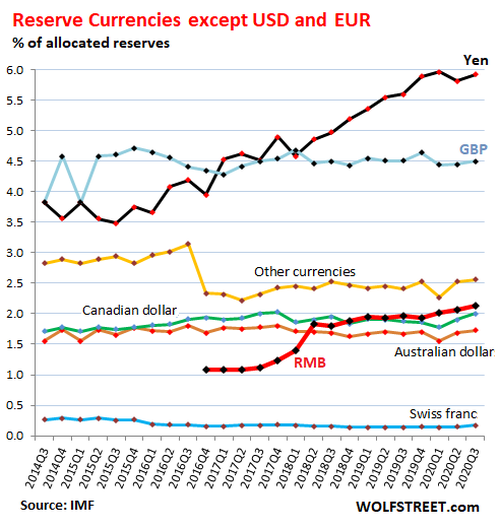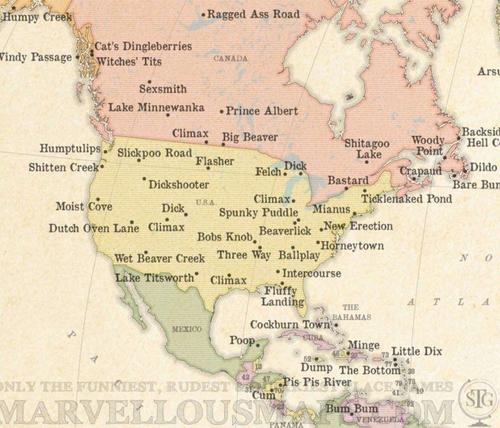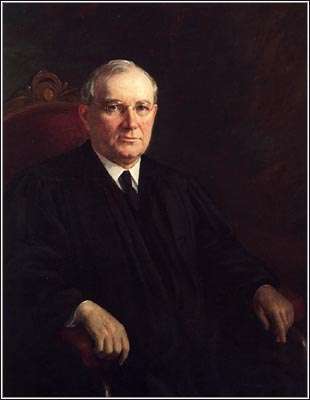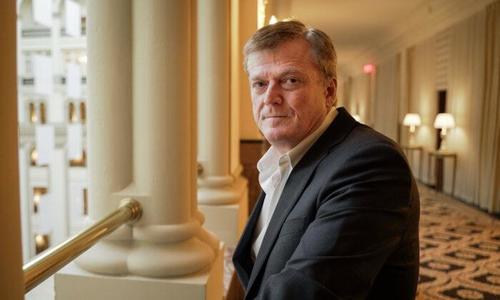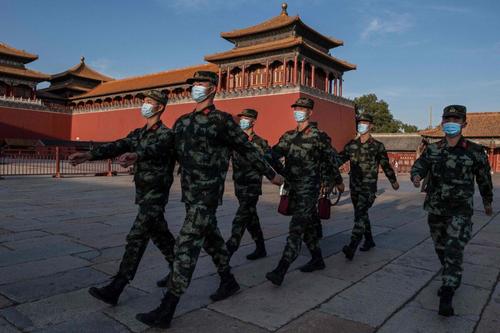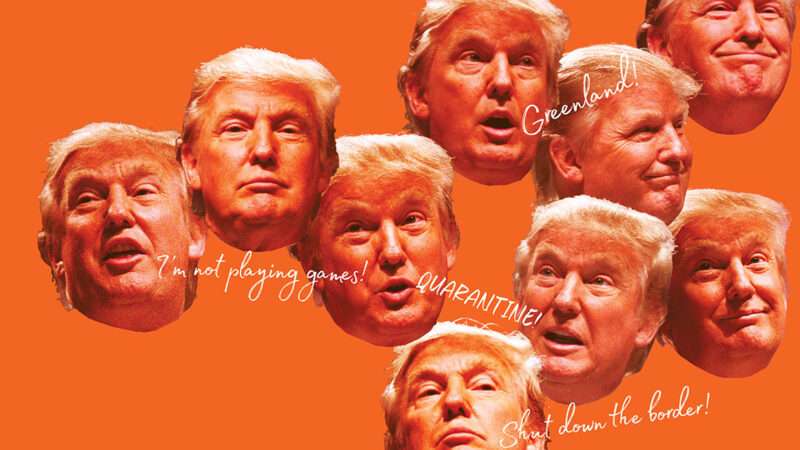My fellow Americans, our long National Infrastructure Week is over. The whole thing’s been exhausting: a four-year assault on the sensibilities and senses at a relentless death-metal pace. Every day brought a new enormity, from that uncomfortably Freudian spat with Kim Jong Un about whose “nuclear button” was “bigger & more powerful” to the eerie “I’m meltinggg!” rants about voter fraud near the end. Midway through Donald J. Trump’s tenure, in a desperate attempt at self-care, I moved my iPhone from nightstand to dresser—just to delay my what-fresh-hell-is-this early morning scan of the president’s Twitter feed until I was actually upright.
But was it all as radically disjunctive as it felt? Humor me: Try, if you can, to mentally mute @realDonaldTrump’s Twitter feed; conjure up a President Trump who in his public conduct is as impeccably boring as Vice President Mike Pence. Thus limited to concrete actions taken and new powers seized, you might be able to make out something that looks closer to a bog-standard version of the imperial presidency—not quite as “not normal” as the Trump presidency seemed.
America’s “thought leaders” find that notion unthinkable. Trump is “the closest we have ever come to a dictator,” declares former Labor Secretary Robert Reich. The mere prospect of 45’s reelection “poses the greatest threat to American democracy since the Second World War,” the New York Times editorial board insisted as Election Day loomed. Trump “stands without any real rivals as the worst American president in modern history,” the Gray Lady gasped, having “outstripped decades of presidential wrongdoing in a single term.”
It’s usually a mistake to reach for historical superlatives about a presidency we’ve barely finished living through. Even so, I could entertain a couple for our newly departed 45th: “least competent” or “most rhetorically unhinged.”
But the closest we’ve ever come to a dictator? C’mon, man. Contemplate the Four Seasons Total Landscaping incident four days after the election. Aiming to schedule a key press conference about legal challenges to President-elect Joe Biden’s victory, the Trump team shot for the Philadelphia Four Seasons but accidentally landed at a lawn-care outfit between a crematorium and the Fantasy Island adult bookstore. What should have been obvious long before had become gut-bustingly apparent: If this bunch were actually hellbent on implementing fascism, they’d get lost en route to the Reichstag and end up torching a garden supply store by mistake.
None of the above should be particularly comforting. Attempting to overturn a democratic election is no less deplorable just because you’re comically bad at it. The fact that our 45th president lacked the competence, self-discipline, and functional attention span to bring his worst autocratic impulses to fruition was certainly better than the alternative. But Trump’s manifest unfitness for office cut both ways. Those same character deficits helped magnify the toll of “American carnage” in the epically bungled response to the COVID-19 pandemic.
And even if Trump’s authoritarian bluster rarely cashed out into any real-world seizure of new powers for the president, it was far from harmless. Four years of 100-proof strongman rhetoric may have the effect of building up our tolerance if and when the real thing comes around in a smoother blend. When (at least) half of the political class feels driven by partisan loyalty to defend or downplay open contempt for constitutional limits, it’s likely to make well-planned assaults on those limits that much easier to execute. Donald Trump may yet end up being a “transformational” president, not because of the abuses he managed to carry out but thanks to the dangerous possibilities he revealed.
As Seen on TV
If you were even half paying attention, as Trump’s tenure wore on you should’ve noticed how infrequently the man’s authoritarian brain-spasms made the transition from alarming tweet to nefarious plan.
In the first three years of his term, for instance, the president threatened, among other things, to fire special counsel Robert Mueller; revoke birthright citizenship with the stroke of a pen; shut down the Mexican border entirely (“I’m not playing games!”); and “hereby order” American companies to stop doing business with China. The power of my tweets compels you!
In each case, Trump basked in the resulting media frenzy, then did nothing whatsoever to follow through. It always ended up being a more unnerving version of “Dude: Let’s buy Greenland!” It wasn’t like it was ever going to happen.
Then came the pandemic, a workable excuse for a presidential power grab if ever there was one. The modern imperial presidency had been forged in three great crises: World War I, the Great Depression, and World War II. Here was a national emergency that, in terms of lives lost and economic damage, rapidly eclipsed the two prior crises of the 21st century: 9/11 and the financial collapse of 2008.
This was one of the rare occasions where some Hamiltonian “energy in the executive,” intelligently directed, could have been welcome. It’s hard to imagine any of the available alternatives from the 2016 race standing up a gimcrack testing program and hammering the U.S. “curve” down to South Korean levels, but a replacement-level president might have had the decency not to make a terrible situation worse. Instead, President Trump spent his time jawboning the stock market and downplaying what he privately knew to be a “deadly” plague.
As the gravity of the situation became undeniable, Trump tried to model bold leadership in the only way he seemed to know how: uncorking a series of proposals from the dictator’s playbook. In late March, he threatened to impose an ALL-CAPS federal “QUARANTINE” on New York, New Jersey, and Connecticut—something that would almost certainly require U.S. military boots on the ground and guns turned on American citizens to enforce. Two weeks later, at his daily coronavirus briefing (“great ratings”), Trump claimed “the ultimate authority” to force state governors to reopen their economies. That was Monday; during Wednesday’s show, he threatened to forcibly adjourn Congress if the Senate wouldn’t confirm his nominees. Maybe it was sweeps week.
But once again, you’d have been a fool to take the president seriously, let alone literally. Almost immediately, Trump backed off his threat to build a wall around the Tri-State Area, opting for a “strong Travel Advisory” instead. It took him 24 hours to climb down from his claim of “total” power over the states, and his threat to prorogue the legislature was quickly forgotten. You almost got the impression that the only “ultimate authority” that interested Donald Trump was full-spectrum dominance of the news cycle.
It clearly wasn’t self-restraint or constitutional fidelity that held Trump back from acting on his worst threats. A more likely explanation: Implementing these schemes would have been hard work and not strictly necessary to the performance. “Before taking office,” The New York Times’ Maggie Haberman reported in 2017, “Mr. Trump told top aides to think of each presidential day as an episode in a television show in which he vanquishes rivals.” In the end, he wasn’t a dictator: He just played one on TV.
Trump’s (Few) Dangerous Innovations
With the powers of the modern presidency, though, you needn’t be a dictator to get away with murder. The night before the election, ex-Republican Rep. Justin Amash (L–Mich.) unleashed a tweetstorm about Trump’s “appalling” record of expanding federal power. Among other offenses, the 45th president had “launched attacks in multiple countries without congressional approval,” vetoed legislative efforts to limit U.S. support for the criminal Saudi regime and to roll back America’s involvement in Yemen’s civil war, and signed legislation extending federal surveillance powers. All true, and all good reasons, as Amash argued, for libertarians to renounce Trump and all his works.
Still, most of the items in Amash’s bill of particulars were the sort of fare you’d expect any Republican commander in chief to serve up. What, if anything, has our 45th president added to the executive arsenal that’s genuinely new and dangerous? For a self-styled businessman president, Trump wasn’t terribly entrepreneurial when it came to devising new ways to expand presidential power. But he did come up with a few genuinely dangerous moves that will be studied and emulated by future presidents.
Though public policy mostly seemed to bore Donald Trump, he did have a longstanding interest in two areas, trade and immigration, which is where he made some of his most aggressive executive power grabs. In March 2018, he hiked tariffs on steel and aluminum, invoking a little-used provision in a Kennedy-era trade law allowing the president to restrict imports based on the claim that they threaten “national security.” In February 2019, he declared a national emergency in order to “build the wall” on the U.S.-Mexico border, diverting billions of dollars to a pet project Congress had refused to support.
Trump also seized dangerous new ground in January 2020, when he used the targeted-killing machinery set up by George W. Bush and perfected by Barack Obama to eliminate Iranian Gen. Qassem Soleimani. That move was too “over the top” even for uber-hawk Sen. Lindsey Graham (R–S.C.), who, according to Bob Woodward’s Rage (Simon & Schuster), tried unsuccessfully to talk the president down over golf.
The Soleimani hit was something new under the sun: It marked the first time an American president publicly ordered the assassination of a top government official for a country we’re not legally at war with. It was also a major usurpation of congressional power: Killing a senior government figure with a drone-fired missile is something every country on earth would consider a declaration of war, and under our Constitution, the president doesn’t get to make that call by himself.
Shamelessness as a Superpower
Still, most of what Trump did to push the envelope on presidential power wasn’t directed toward anything you could even call a policy goal. Our 45th president’s interest in executive power was overwhelmingly personal: a weapon for settling scores and covering up incompetence and graft. If I believed Donald Trump could plan past his next Dove Bar, let alone play multidimensional chess, I’d almost suspect there was a method to his madman act: Wind people up with visions of dystopian military quarantines and maybe they’ll be too distracted to notice more workaday abuses like stonewalling Congress and firing government watchdogs.
Trump made impressive strides in both areas. During the late 2019 impeachment fight, he categorically refused to cooperate with congressional demands for information on the grounds that the inquiry was biased—something that neither Andrew Johnson nor Richard Nixon nor Bill Clinton dared try. But perhaps Trump’s boldest presidential-power move in 2020 was launching what even the Trump-friendly New York Post editorial board called a “war” on inspectors general. Over a matter of weeks last spring, the president forced out five government watchdogs, most of them for transparently retaliatory reasons, such as issuing an accurate report on the administration’s massive COVID-19 failures.
No previous president had thought to fire multiple I.G.s just because they were in the process of embarrassing his administration—after all, wouldn’t that look crooked? Nor, it seems, did it occur to any of Trump’s predecessors that you could declare a national emergency to do an end run around Congress in a budget fight. Hamilton’s argument for an energetic executive in Federalist No. 70 assumed a president at least somewhat susceptible to “the restraints of public opinion.” But as Harvard law professor Jack Goldsmith puts it, “shamelessness in a president is really empowering.”
By pushing the limits of these unwritten rules, Trump demonstrated that presidents can get away with more than they might have thought. His smarter successors will be able to take advantage of how much he’s defined deviancy down.
Though most of Trump’s efforts to turn the Justice Department against his political enemies were as poorly executed as his last-minute Keystone Koup attempt to overturn the 2020 election, he had far more success in corrupting his co-partisans in Congress. By excusing or ignoring the 45th president’s disgraceful assaults on democratic norms, Republicans have largely abandoned any principled objection to such moves in the future. If and when an actually competent authoritarian comes along, what will their argument be? “Yeah, but our guy wasn’t any good at it”?
Bet on Biden?
Who knows, though: Maybe we’ll get lucky and the next president will radically downsize the presidency instead. Writing in Politico, Zachary Karabell enthuses: “Biden could be the first president in modern history to acknowledge that office has become too powerful, and finally scale it back.”
He could. Is there much reason to think he will?
The Biden-Harris platform contemplates plenty of pen-and-phone governance, including a raft of “Day One” executive orders on climate change. For pandemic response, Biden takes FDR as a model, with a New Deal–style COVID plan that envisions the appointment of a national “supply chain commander” and the creation of a “public health job corps” of contact tracers.
For the most part, though, the 2020 race featured vanishingly little discussion of presidential power issues. The major exception came quite early in the campaign, when, thanks to The New York Times’ Charlie Savage, both Biden and then–Sen. Kamala Harris answered a detailed questionnaire fleshing out their views on the powers of the office.
Savage has run his candidate executive-power survey for each of the last four presidential election cycles, so Joe Biden’s gone through it twice—in 2007–08 and in the current race. When you compare his answers, you can spot some telling shifts: Biden’s views on the powers of the office “grew in office” during his tour as vice president.
In 2008, then–Sen. Biden was concise and unequivocal: “The Constitution is clear: except in response to an attack or the imminent threat of attack, only Congress may authorize war and the use of force.” The 2020 version leaves himself a lot more wiggle room: Biden now says, in keeping with the Obama administration’s line on Libya, that the president can launch a little war, splendid or otherwise, if he doesn’t think it’ll bog us down and last too long. (It’s possible, he allows, that a preventive strike on Iran or North Korea might be a bigger constitutional deal.) Whatever the reason, the former vice president now embraces a suite of executive war powers that a younger, wiser Biden rightly considered dangerous.
Perhaps even more telling is latter-day Biden’s refusal to commit to emergency powers reform. This time around, Savage asked the candidates which of 10 “Potential Post-Trump Reforms” they’d endorse. First on the list is restricting the president’s ability to invoke new powers by declaring a national emergency. Biden skips past it, endorsing a number of reforms aimed at Trumpian self-dealing: mandating release of the president’s tax returns; forcing him to divest major business holdings; tightening restrictions on nepotism; and regulating self-serving uses of the pardon power. But the former vice president has already released his tax returns; he doesn’t own a hotel chain; and unless he wants to dangle pardons to cronies or put his son Hunter in charge of Middle East peace, these are fairly low-cost concessions. They’re unlikely to cramp President Biden’s style.
When it comes to emergency powers, it looks like the president-elect is keeping his options open. After all, as Sen. Chris Murphy (D–Conn.) put it last year, if Trump can use those powers to fund a border wall, there’s nothing stopping “a Democratic President from declaring a climate change emergency and using military dollars to build solar farms and wind turbines.” Murphy meant that as a critique of Trump, but to a Democratic president facing divided government, it might look like a pretty solid plan.
Not to be too morbid about it, but Biden will be 78 on Inauguration Day, older than any previous president—and so far, eight vice presidents have gained the presidency as a result of a death in office. So it’d be nice to have a handle on Harris’ presidential power philosophy as well.
Alas, in her answers to the Savage questionnaire, Harris was even more evasive and less reassuring than Biden. It might be time to “rewrite” the nearly two-decade-old Authorization for the Use of Military Force that Congress passed after 9/11, Harris allows, but she “won’t hesitate to do what it takes to protect our country in the face of an imminent threat in the future.” Would that include bombing North Korea or Iran? Those situations “require careful consideration of all of the surrounding facts and circumstances.” Ah. Is it lawful to hold American citizens without trial as “enemy combatants” or kill them with drone strikes? “Any president should reserve the right to act quickly to protect the country from attack, but decisions of such consequence must rely on our values and constitutional principles.” Well, that clears it up, thanks.
All of this is a reminder, if one was needed, that real presidential reform isn’t going to come from within the executive branch. The sorts of men and women who are willing to do what it takes to become president are unlikely, having won the prize, to turn around and say: “You know what? Now that I’m here, I’d like a whole lot less power!” At best, they’ll grudgingly accede to restraints imposed from the outside. Congress has to force the issue.
A Return to Normalcy?
On May 14, 1920, in soporific, passive-voice verbiage, Republican presidential candidate Warren G. Harding described a nation exhausted by war, federal overreach, and global pandemic: “Poise has been disturbed, and nerves have been wracked, and fever has rendered men irrational. Sometimes there have been draughts upon the dangerous cup of barbarity.”
He went on: “America’s present need is not heroics, but healing; not nostrums but normalcy.” The word that Harding popularized in that speech enjoyed renewed cachet in 2020, generating “normalcy” thinkpieces and spiking on Google Trends as Americans longed for a return to relative calm and regular order.
The 47-years-familiar figure of Joe Biden seemed to fill that need, with a sort of rebooted front-porch campaign run out of a basement Zoom studio. Toward the end of the race, Trump almost seemed to be making the case for his opponent. A vote for Biden, the president declared at a late October rally in Erie, Pennsylvania, was a vote for “boredom.” “Look at all those cameras,” Trump urged the crowd, “If you had Sleepy Joe, nobody’s going to be interested in politics anymore.” Four days after the election, when the president-elect delivered his victory speech—”an outpouring of joy, of hope, renewed faith in tomorrow to bring a better day”—the old platitudinous yammery struck many as surprisingly soothing.
Why wouldn’t it? As November ground on, so did Trump’s Norm-Demolition Derby. At a gonzo press conference on the 19th, the president’s lawyers insisted—sans evidence—that he’d won reelection in a “landslide,” the true result stifled by a vast conspiracy involving the “massive influence of communist money through Venezuela, Cuba, and likely China.” “This is real! It is not made up!” a sweaty Rudy Giuliani squawked. Was “boredom” supposed to be a threat?
But while a change in tone is welcome, it won’t change the fundamentals. Good luck forgetting about presidential politics when the president has the power to shape what our health insurance covers or unilaterally forgive student loans, the ability to launch a trade war from his couch or a shooting war with Iran. You may not want to be interested in the presidency, but the presidency is interested in you.
After Trump, the office will still be invested with more power than any single, fallible human being can safely be trusted with. Unless and until we start taking that power back, it’s only a matter of time before politics gets all too interesting once again.

from Latest – Reason.com https://ift.tt/3nbnvom
via IFTTT
